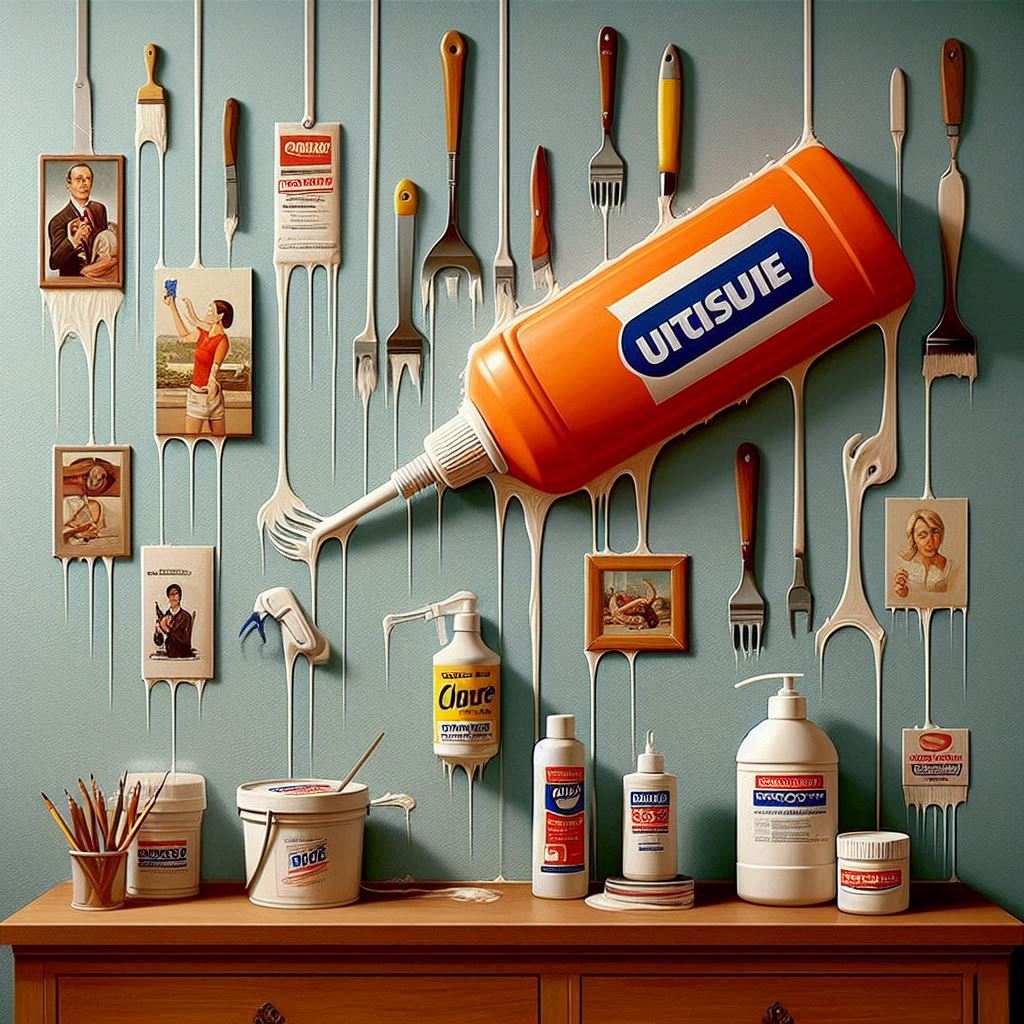Glue residue on walls can be a frustrating challenge, whether from stickers, tapes, or other adhesives. If you’ve ever had sticky marks left behind after removing a wall decal or adhesive tape, you know how stubborn these residues can be. Luckily, there are more than a few effective techniques for how to remove glue from walls minus the damage. We outlined seven verified techniques to assist you in getting your walls back to their original state.
Table of Contents
1. Prepare the Area Properly
Before you start the process of how to remove glue from walls, it’s necessary to prepare the specific area or space and safeguard nearby areas as well. Move the furniture away from the wall. Also covering the floor with either old towels or some good-quality plastic wrapping would be the best choice during the procedure. This will prevent any cleaning solution from splashing onto your furniture or flooring. Additionally, be sure to cover electrical outlets or turn off the power if you’re using liquid solutions to avoid any risk of electrical shock.
2. Use Hot Water and Dish Soap
The most common, simple and benign means for how to remove glue from walls is to use dish soap with hot or high-temperature water. The dish soap present in the mixture assists in breaking down of the bonding agent in the glue, while the warm water softens the glue, making it easier to remove.
How to Apply:
Take a few drops of dish soap and mix it with hot water. Then either spray it on the affected area using a spray bottle or apply it with a sponge. Within a few minutes the glue will soften, then lightly rub off the remains using a flat, safe to use object like a butter knife. For extra effectiveness, try adding a tablespoon of baking soda to the solution to help lift the residue more easily.
3. Vinegar and Warm Water Solution
One more natural but effective solution for how to remove glue from walls is using vinegar. Vinegar has Corrosive properties (it has ph lower the 7 which makes it acidic) which aid in breaking down of gluey pastes, making it a perfect model for dealing with stubborn residue.
How to Apply:
Mix one part vinegar with six parts warm water in a bucket, or if you’re using a spray bottle, try a 50/50 mixture. Smear the solution on to the glue and let it rest for a few moments. The vinegar will assist in breaking down of the adhesive, allowing you to wipe it away. After that, wash that specific part with fresh water to remove any leftover vinegar and glue.
4. Fabric Softener Solution
If you’re looking for a technique or method which is milder then the rest and leaves a lovely scent behind, fabric softener can be an excellent option. This method works well on most types of glue and is particularly effective on painted walls without causing damage.
How to Apply:
Blend the fabric softener and water in a ratio of 1:2, where fabric softener is one part and water two parts. Smear the blend of water and fabric softener on to the area with adhesive, using a scrubber or mist bottle. Allow it to sit for a few minutes to soften the glue. Be careful not to over-apply the solution, as it could stain the wall. Later, wipe away the residue using a fresh cloth, rinsing the wall with warm water if necessary.
5. Clothes Steamer
A clothes steamer, if you have one on hand, can be an effective tool for how to remove glue from walls. Heat melts the glue and breaks down the adhesive’s present in the glue, use the advised way in the following paragraph.
How to Apply:
Place the steamer near the affected area and allow the steam to loosen the glue. Once the residue is softened, use a soft cloth to wipe it away. Try not to get the clothe steamer way too close to the paint to as it may damage the paint. This method is especially helpful for removing tape residue or stubborn wall decals.
6. Scraping the Residue
After using any of the cleaning techniques said above, there is a slight chance that some bits of the glue may be left behind. In such cases, gentle scraping is required. To carefully scrap off the remainder, use something not so sharp like a butter knife or the edge of a spoon.
How to Apply:
Hold the scraper at a slight angle and gently scrape the adhesive off the wall. Be cautious not to scratch or gouge the paint. If any uneven spots remain, you can use sandpaper to smooth them, but be gentle to prevent harming the wall.
7. Rinse and Dry the Wall
After you’ve removed the glue along with its bits and pieces completely, it’s crucial to clean the area thoroughly. Use clean, warm water to rinse the wall, ensuring all cleaning solutions and residue are removed. Wipe the wall with a dry cloth afterward to prevent streaks. Let the wall to dry completely before applying any new murals or wall décor to ensure proper adhesion.
Additional Tips for Successful Glue Removal
- Keep Water Hot: For “all-out” efficiency, always use hot water when preparing cleaning solutions. Hot water helps to soften the glue faster and makes the removal process easier.
- Avoid Over-Saturation: When using cleaning solutions, avoid oversaturating the wall. Excess moisture can weaken drywall and paint, causing long-term damage.
- Work in Small Sections: Tackling small sections at a time ensures that the cleaning solution doesn’t dry out before you’ve had a chance to work it in. This makes it easier to remove glue without leaving behind residue or streaks.
- Test on a Small Area First: Before applying any cleaning solution to your entire wall, it’s wise to test it on a small, hidden area. This will help ensure that it won’t damage the paint or finish.
When to Consider Commercial Solutions
If you’ve tried multiple DIY methods and still struggle with stubborn glue residue, you might want to consider using a commercial adhesive remover. Products like Goof Off or De-Solv-it are formulated to break down adhesives more effectively. Nonetheless, these produces should be used cautiously, as they can damage paint if over-applied or rubbed too hard. Though it is an obvious things that anything too much can be harmful, so try not go all out.
Conclusion
Knowing how to remove glue from walls doesn’t have to be a difficult task. Whether using vinegar and water (natural solutions) or more precise implements like fabric softener and steamers, there are many things or ways to choose from. Always start with gentler methods and work your way up to stronger solutions if needed. With a little patience and the right approach, your walls will be glue-free and looking as good as new.




Pingback: How to Remove Sap from Clothing: 7 Effective Methods - How to Remove